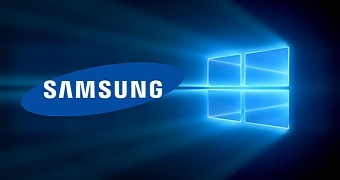Microsoft has worked hard on making Windows 10 an operating system optimized for tablets, especially given its push for 2-in-1 devices with the Surface lineup, and now all these efforts are finally paying off.
In addition to several partners that created tablets and 2-in-1 devices running Windows 10, companies that were previously investing millions of dollars into Android products are now switching sides, most of them convinced by the advantages that Microsoft’s operating system is offering customers.
One such example is Samsung, which has until now been one of the top companies building Android devices, including tablets and smartphones. But as far as tablets are concerned, Samsung is ready to bet big on Windows 10, with most of its products to run Microsoft’s operating system and not Android as it happened in the past.
At MWC 2017 in Barcelona, Samsung introduced several new Windows 10 devices, including a so-called Galaxy Book that serves as an alternative to Microsoft’s very own Surface lineup, and now company executives explain that they will continue investing in products running this operating system in the coming years.
Two of the three new product series unveiled at MWC are powered by Windows 10 and Eric McCarty, vice president of mobile product marketing for Samsung Electronics America, says a similar balance will be maintained in the coming years as well, with about 60 percent of its devices to run Windows.
Microsoft’s 2-in-1 push
It’s not difficult to figure out why Windows 10 is attracting more OEMs, especially given the 2-in-1 push happening these days.
Microsoft practically invented the 2-in-1 product category back in 2012 when it officially introduced the original Surface RT, but at that point, OEMs were very reluctant to invest in similar products. Microsoft, however, continued building 2-in-1 devices and more Surface models followed before eventually switching to full Windows to power this device.
The success experienced by Microsoft’s Surface lineup caught the attention of other companies, many of which were excited with the opportunity of offering users both a tablet and a laptop in a single device.
Samsung appears to be discovering the same thing right now, so expect the world’s number one Android phone manufacturer to invest more in Windows 10 tablets in the long term. Unfortunately, not the same thing can be said about smartphones, where Microsoft is yet to offer a worthy alternative to Android.

 14 DAY TRIAL //
14 DAY TRIAL //